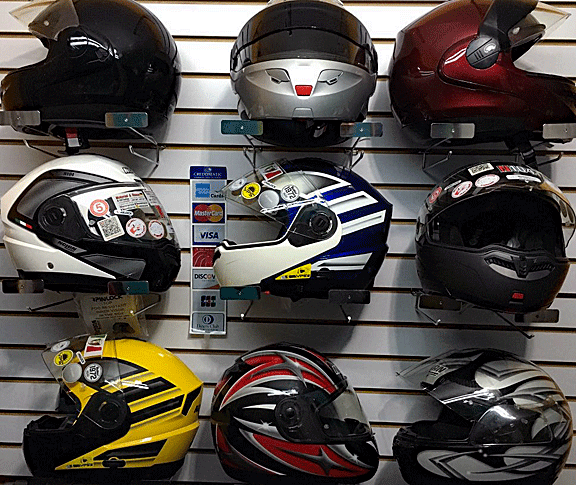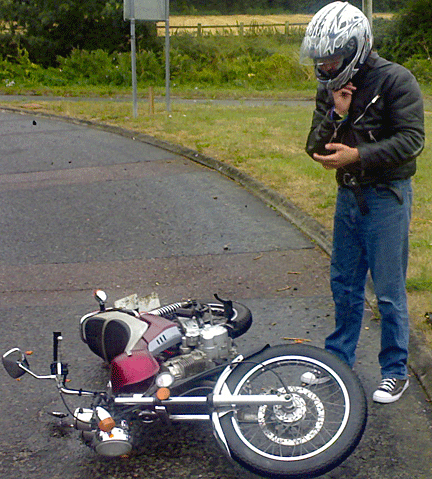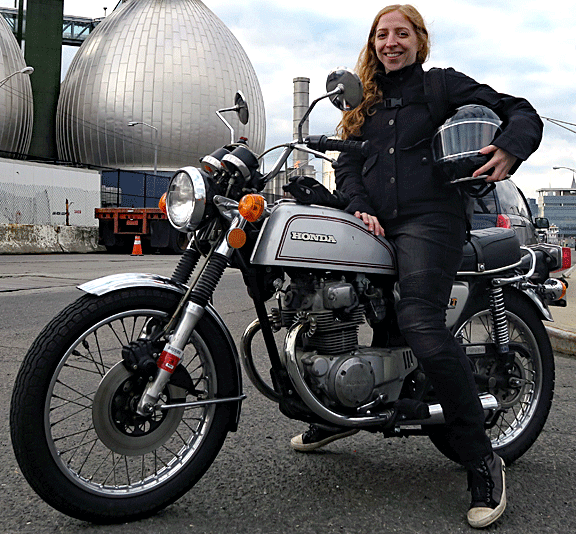
 Motorcycling is all about balance. And by that I don’t mean your ability to stay upright while riding. I’m talking about the fine line between having fun and being safe. Unless you have a death wish, you probably don’t want to toss your life away doing something you love. But on the other hand, if being safe strips away all the joy of riding then you may as well take up scrapbooking or knitting instead.
Motorcycling is all about balance. And by that I don’t mean your ability to stay upright while riding. I’m talking about the fine line between having fun and being safe. Unless you have a death wish, you probably don’t want to toss your life away doing something you love. But on the other hand, if being safe strips away all the joy of riding then you may as well take up scrapbooking or knitting instead.
When it comes to the question of safety versus fun, one of the perennial debates is the matter of helmet choice. It’s a hot button for a lot of riders, and many of them will strenuously argue their points to anyone who’ll listen.
As for whether or not to wear a helmet, it isn’t even a choice in a lot of states—you put a lid on your head or get a ticket every time you pass a cop. Nonetheless, that still leaves a lot of options. Exactly what kind of helmet will keep you safe and legal without taking away all the fun? It’s a question that can get a little complicated once you start looking into it, but the first choice is whether to get an open-face or a closed-face helmet.
As the name implies, a closed-face helmet—also known as a full-face helmet—completely encloses the rider’s face, with a hefty structure that runs across the chin and a clear plastic shield that flips down to protect the eyes. Open-face helmets don’t have any of this, and instead leave most of the rider’s face exposed.
Which is best? Well, it kind of depends. Here’s a quick rundown of the key advantages and disadvantages of each.
 VISIBILITY
VISIBILITY
Advantage: Open-Face
One of the best ways to survive a crash is to not get into one in the first place. And visibility can be a big factor in that—you can’t avoid something if you don’t see it. This is where open-face helmets have an advantage. The face-protecting structure of full-face helmets tends to restrict how much you can see around you.
FACE SPACE
Advantage: Open-Face
A full-face helmet that fits correctly is usually rather snug on the cheeks. It can take a little getting used to the somewhat smooshed-in feeling at first. For that reason, a lot of riders end up buying the wrong size, picking one that’s too large and thereby compromising the helmet’s ability to protect. In contrast, open-face helmets don’t have anything up front pressing in on your face.
OVERALL RIDER ENJOYMENT
Advantage: Depends on type of riding
Feeling the wind in your face can be one of the great joys of motorcycle riding. But that’s assuming you’re not blasting along at highway speeds for long stretches. If you are, the wind can be a real nuisance. So the matter of overall comfort often depends on the type of riding you’re doing. Those who ride primarily in town at moderate speeds may find open-face helmets to be more comfortable. Those who do a lot of highway riding will probably appreciate the enclosure of a full-face design.
PRICE
Advantage: Open-Face
All things being equal, open-face helmets tend to cost a little less than closed-face. The reason should be pretty obvious—there’s simply less material and hardware in an open-face design. That said, when you get right down to it, price should be the least important factor in choosing between open- or closed-face helmets. The difference in price between comparable models of both styles is pretty small. Ultimately, you should buy the best helmet you can afford regardless of which type you deem best.
FACE PROTECTION
Advantage: Closed-Face
 So far, open-face helmets may appear to have somewhat of an advantage. But there’s still the vital question of crash protection. And that may arguably be the biggest factor of all—the whole reason for wearing a helmet in the first place.
So far, open-face helmets may appear to have somewhat of an advantage. But there’s still the vital question of crash protection. And that may arguably be the biggest factor of all—the whole reason for wearing a helmet in the first place.
The simple fact remains that closed-face helmets protect better than open-face helmets. Yes, open-face helmets do shield the skull’s vital cranium area in a crash. But they still leave the chin and face exposed. Although perhaps not as likely to be fatal, a strike to the chin can leave you with more pain and a longer recovery, not to mention possibly disfigured when it’s all done. Statistics show chin strikes to figure into as much as a third of all motorcycle crashes, so it’s a risk worth considering.
So which type of helmet do I personally ride with? Both. When I’m loping around slow neighborhood streets on my little vintage Honda CB100, I feel that the better visibility of an open-face helmet is worth the sacrifice of face protection. I also find that the increased comfort of an open-face in those types of situations makes me less tempted to ride without a helmet, which is legal here in Illinois.
But wearing an open-face helmet is a calculated risk. Hitting the pavement with my chin even at a pokey 20 mph would hurt—a lot! So I still go back and forth about using an open-face helmet even on slow, mellow rides.
And when I’m riding faster, on a bigger bike, I feel far too vulnerable to even consider wearing an open-face. The increased sensation of danger actually cuts into the fun a bit for me. Besides, the additional wind protection of a full-face helmet makes riding much more comfortable at those speeds anyway, so it’s not really much of a question.
 Ultimately, it comes down to how much you’re willing to risk for more enjoyment. I think you can tell which is the rationally smarter choice—full-face helmets inherently protect better, and they also come in more choices of higher quality designs and materials.
Ultimately, it comes down to how much you’re willing to risk for more enjoyment. I think you can tell which is the rationally smarter choice—full-face helmets inherently protect better, and they also come in more choices of higher quality designs and materials.
But if every motorcycling decision could be boiled down to a checklist of logical criteria, we probably wouldn’t be riding motorcycles at all.
It all comes back to balance. Have fun but be smart—the choices are up to you.